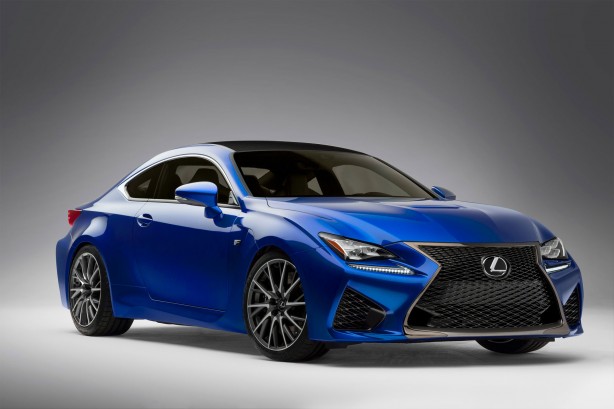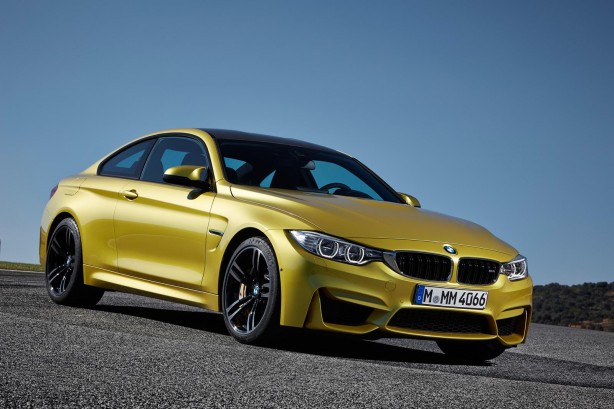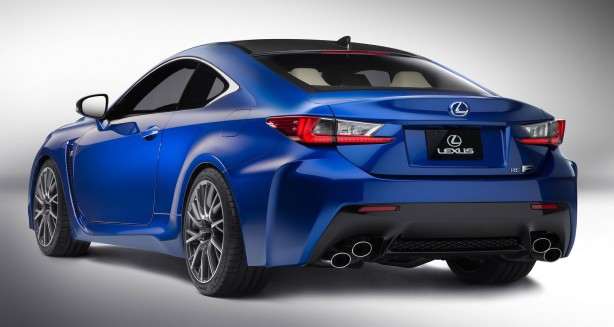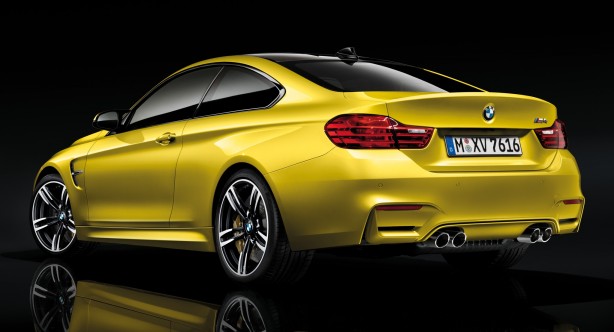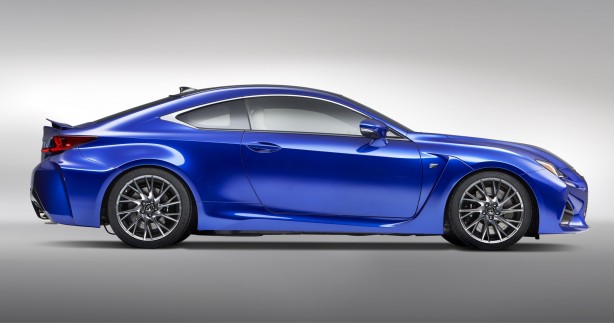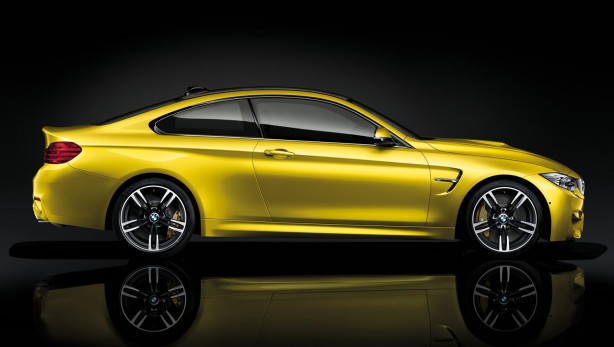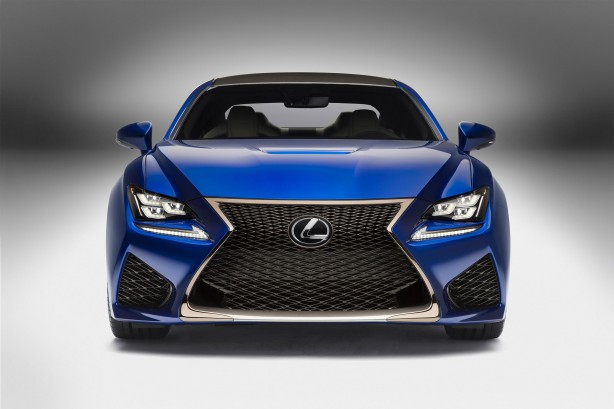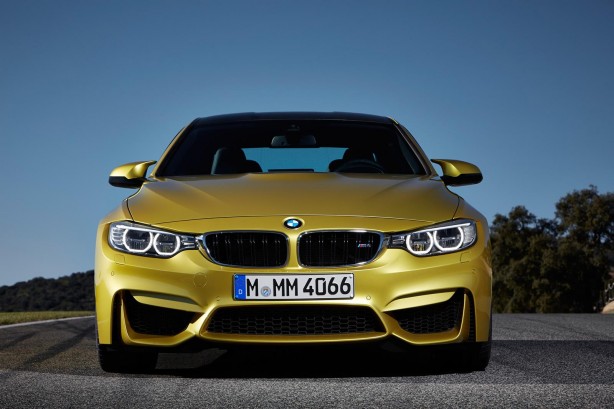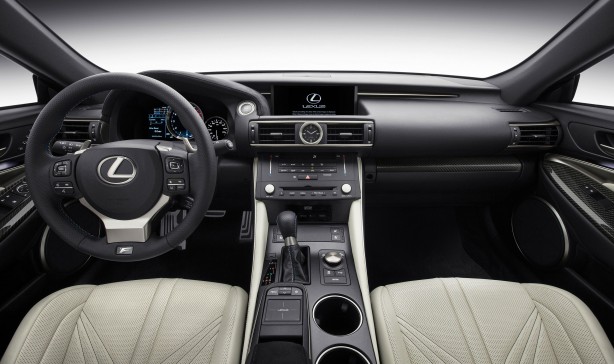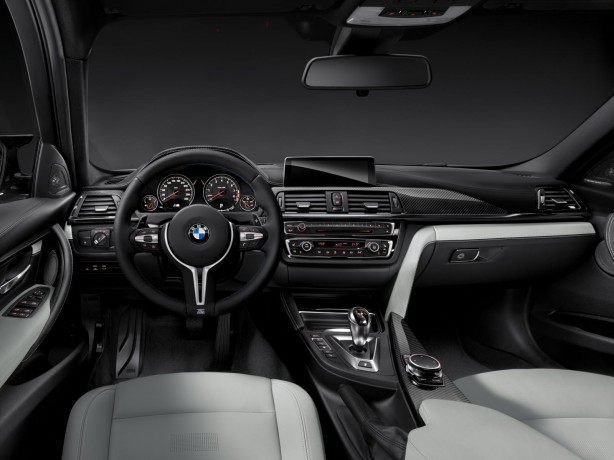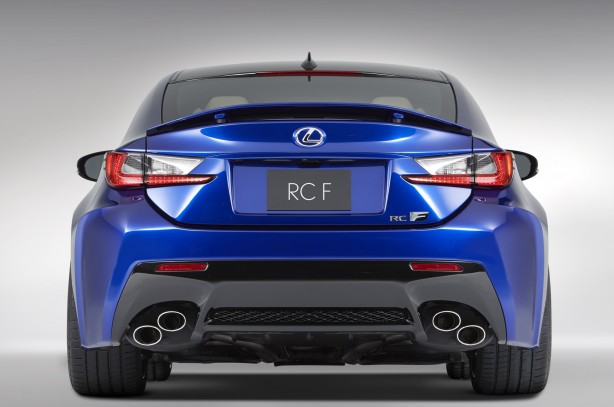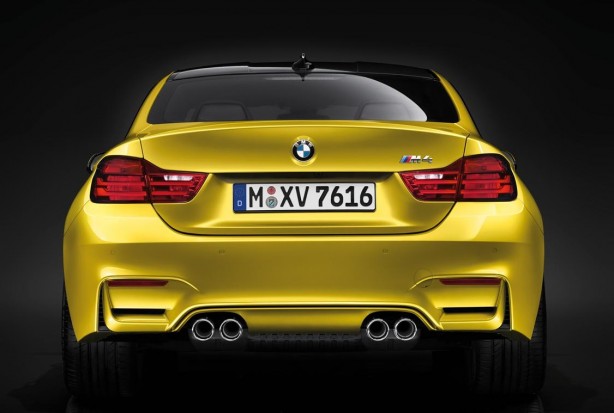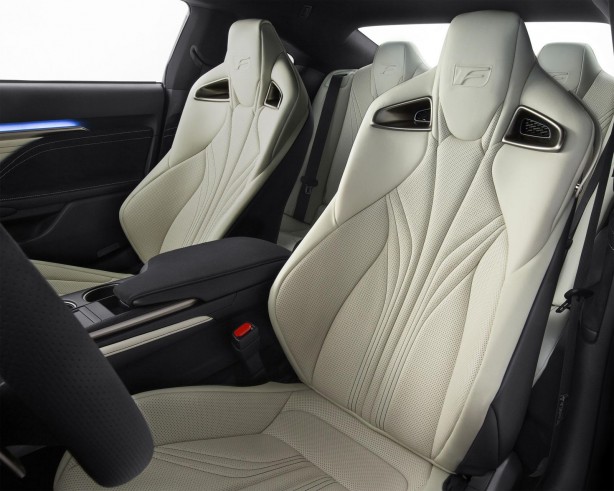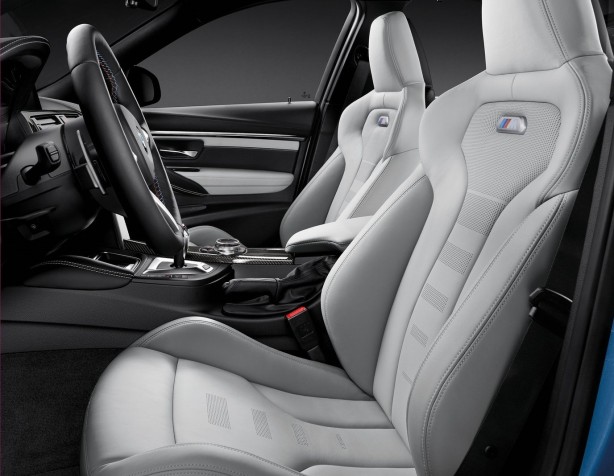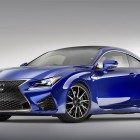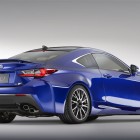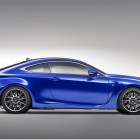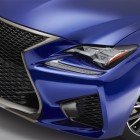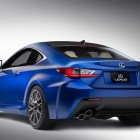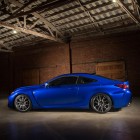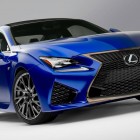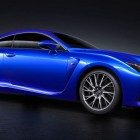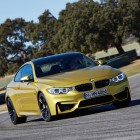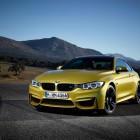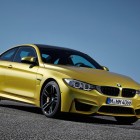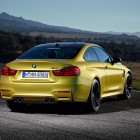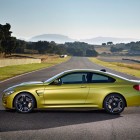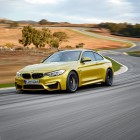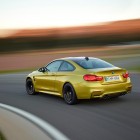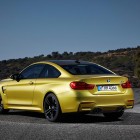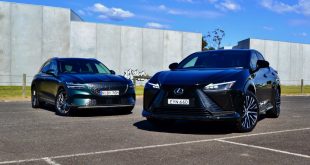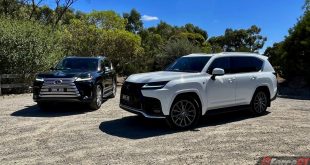The new Lexus RC F stormed into the opening day of the 2014 North American International Auto Show looking like it’s ready to pounce on the BMW M4 on display a few stands away.
The RC F is Lexus’ answer to BMW’s recently launched M4. Both are high performance rear-wheel-drive coupes, both have about the same power output and performance figures, and both were honed out of their sedan siblings. The fight for the throne in the premium sports coupe segment has never been more intensive. The RC F is not only bringing its arsenal to the M4, but also the Audi RS5 and the soon-to-be released Mercedes-Benz C63 AMG Coupe.
Joining an increasingly exciting line up, the RC F is the car Lexus hopes will once and for all shed people’s perception that their cars are nothing but executive suites on wheels, which you have to struggle to stay awake driving them. With the GS F rumoured to be in the pipeline, a new SC replacement and a slew of new turbocharged engines about to find their ways under the bonnet of future Lexus vehicles, things are indeed looking interesting for the Japanese premium marque.
So, until both the RC F and M4 hit the road for a proper street battle, let’s have a closer look and compare some technical details of both cars.
Engine & Drivetrain
The RC F promises to be the most powerful V8 performance car ever developed by Lexus, equipped with an improved 5.0-litre V8 engine from the outgoing IS-F with “well above 330kW (450hp) of power and 520Nm of torque” that could enable the coupe to accelerate from 0-100km/h in around 4.5 seconds and en route to a top speed of 300km/h (186mph).
For the first time in a Lexus performance engine, the V8 in the RC F uses the Atkinson cycle at cruising speeds for enhanced fuel economy and then switches to the Otto cycle at higher rpm. Lexus claims this technology will develop impressive performance levels and improve fuel economy.
At the heart of the Bavarian is a 3.0-litre TwinPower Turbo six-cylinder engine that features two mono-scroll turbochargers and double VANOS variable valve timing. The high-revving unit (up to 7,600rpm) develops 317kW (431 hp) of power between 5,500-7,300rpm and 550Nm of torque between 1,850-5,500rpm, enabling the 1,497kg M4 Coupé to rocket from 0-100km/h in 4.1 seconds before hitting an electronically limited top speed of 250km/h, or 280km/h with the M Driver’s Package. With the limiter removed, the M4 will crack 300km/h.
Driving the rear wheels in the RC F is a specially tuned eight-speed Sports Direct Shift (SPDS) transmission. The newly calibrated Vehicle Dynamics Integrated Management (VDIM) adds a vertical G-sensor to provide greater vehicle stability. Combined, the system is able to help the driver control the torque and power more precisely as it is applied. For now, no manual gearbox is offered for the RC F.
The M4 makes use of the company’s third generation seven-speed M Double Clutch Transmission (M DCT) with new added features. The Smokey Burnout function (we like that!) allows the driver to indulge in a degree of rear wheel spin while the car is moving at low speeds, while Stability Clutch Control opens the clutch when the car is understeering to bring it back into line.
Also available in the M4 is a standard six-speed manual gearbox with double-plate clutch. The new gearbox now blips the throttle for you on downshifts.
Handling
Whether the Lexus’ higher power output is able to offset its 300 kg or so weight disadvantage over the BMW remains a question to be answered in a track shoot out. However, with both cars packing advanced electronic gizmos, we shall expect a close fight.
The RC F uses a Torque Vectoring Differential (TVD), a first in a Lexus, to enhance driving performance. It has three operating modes: Standard for a balance of nimble performance and stability; Slalom for emphasis on nimble steering response; and Track to help with consistent stability, ensuring the vehicle stays on the intended cornering line as the driver applies more throttle. Lexus claims its system works differently compared to conventional differential. Whatever it is, its aim is still the same – to pull the car in the driver’s intended line of travel.
The M4’s new rear differential and Active M Differential uses an electronically controlled multi-plate limited-slip differential (LSD) to optimise traction and directional stability. Together with Dynamic Stability Control (DSC) the system takes into account the position of the accelerator pedal, the rotational speed of the wheels and the car’s yaw rate to vary the degree of lock – which may be anywhere between 0 and 100 per cent.
The RC F features an even stiffer body than that of the IS 350. Large cross-section rocker panels and a very stiff front lower brace promise to give even greater handling and control. Lexus hasn’t given out much on suspension specifics but states that the car has front and rear coil-spring independent suspension, with monotube gas-filled shock absorbers and ball-jointed stabiliser bars. Unsprung weight is reduced by the adoption of new lightweight 19-inch forged aluminum wheels, with three different designs to choose from.
Highlight for the M4’s chassis is a very low centre of gravity (lowest in the BMW range). There is also heavy focus on low weight construction and high rigidity for the axle systems. The use of a lightweight aluminium construction in the front and rear axles for components such as control arms, wheel carriers and axle subframes manage to shed five kilograms per axle over a conventional steel design.
BMW has also tighten the front end using an aluminium stiffening plate, carbon fibre reinforced polymers (CFRP) front strut brace and additional bolted joints between the axle subframe and the body structure. The M4 rolls out of the factory on standard 18-inch wheels, with 19-inch available as an option.
Design
Well, this is a bit subjective really. The RC F’s shape is no doubt one of the most stunning and aggressive designs to have escaped the company’s corporate screening without ending up in the trash. Lexus’ traditionally conservative approach to design is finally a thing of the past – starting from the radical new IS.
Although we are not a big fan of the ultra wide ‘spindle’ grille, nor the buldging bonnet with a non-classy looking air-breather, the rest of the car is mouth-wateringly gorgeous. The active rear spoiler is a surprise but we are glad Lexus put one in as it looks cool, whether or not it’s effective is another matter. We do admit that turning our eyes to the M4 after gawking at the RC F for a full 10 minutes, effectively makes the M4 look rather ‘pedestrian’.
Built on a rich heritage as the car to beat in this segment for over 3 decades (can the RC F stop this?) means the M4 need not have to ‘try too hard’ in its design. While looking less aggressive than the RC F, the M4 is still a stunningly handsome sports coupe with smooth flowing, elegant lines wrapped around a perfectly proportioned body shape.
Inside, the RC F is all IS while the M4 is all 3-Series. Both cars have enough leather, soft-touch materials and Alcantara to fill up a small auditorium. In contrast to the shouty exterior, the RC F’s cabin is clean, elegant and understated. The LFA style digital instrument gauge is the coolest part of its interior, although unlike the moveable centre cluster in the LFA’s, this one is static.
The M4’s cockpit seems more driver-oriented than the RC F. Contemporary design theme highlights every corner of the cabin, giving it a preference for sporty over classy. However, we do dig the seats in the RC F more than those in the M4.
Specifications
Lexus RC F:
5.0-litre V10, more than 330kW (450hp) / 520Nm
8-speed automatic
Rear-wheel-drive
BMW M4:
3.0-litre turbocharged in-line 6, 317kW (431 hp) / 550Nm
7-speed twin-clutch automatic or 6-speed manual
Rear-wheel-drive
Lexus RC F Gallery
BMW M4 Gallery
 ForceGT.com Car News, Car Reviews, Video Reviews, Tuning and much more.
ForceGT.com Car News, Car Reviews, Video Reviews, Tuning and much more. 
